Key Takeaways
- Understand Oregon’s Job Market – Stay updated on industry trends, workforce demographics, and in-demand skills to attract top talent.
- Leverage Effective Hiring Strategies – Utilize job portals like 9cv9, recruitment agencies, and networking platforms to source qualified candidates.
- Ensure Compliance and Retention – Follow Oregon’s hiring laws, implement strong onboarding programs, and foster a positive work culture to retain employees.
As the job market in Oregon continues to evolve in 2025, businesses looking to find and hire top talent are faced with both exciting opportunities and unique challenges.
The state’s diverse economy, rich in technology, healthcare, and manufacturing industries, provides a wealth of potential employees.
However, navigating the complexities of hiring in Oregon requires a thorough understanding of the local job market, legal requirements, and the most effective recruitment strategies.
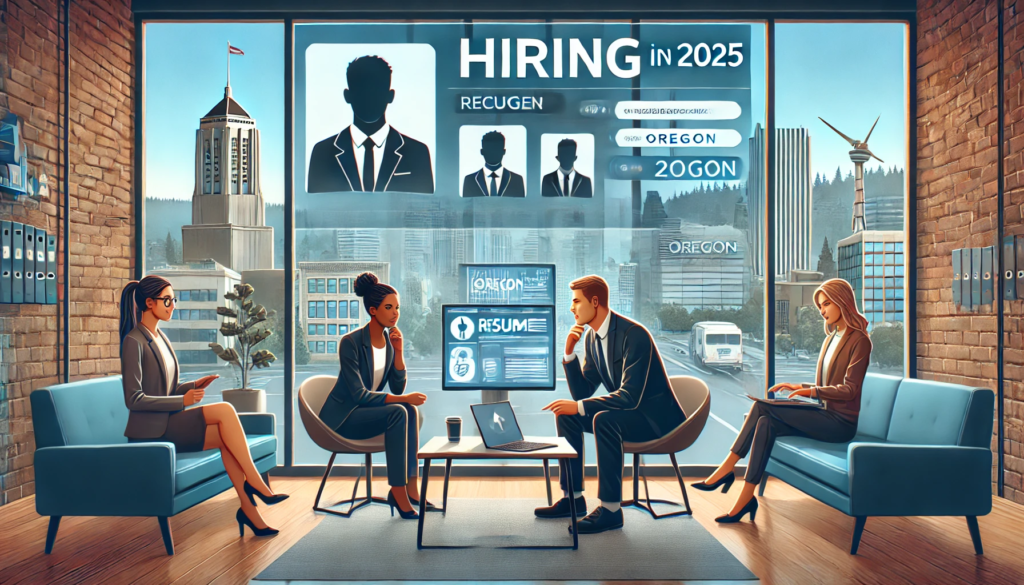
Oregon’s workforce is characterized by a combination of seasoned professionals, emerging talent, and an increasing number of workers seeking flexible work arrangements.
As companies strive to stay competitive, attracting the right talent is paramount for success.
With industries such as tech, agriculture, green energy, and healthcare continuing to thrive, the demand for skilled professionals is expected to grow in 2025.
However, finding and hiring the right candidates requires more than just posting job listings.
In this blog, we will guide you through the process of hiring employees in Oregon, USA, in 2025, by exploring essential aspects such as local employment trends, legal considerations, and best practices for recruitment.
Whether you’re a small business owner in Portland or managing a large corporation in Eugene, understanding Oregon’s unique labor dynamics is key to making informed hiring decisions.
From sourcing talent through local channels to navigating the state’s employment laws, this guide will equip you with the knowledge to successfully find, hire, and retain the right employees for your business needs.
By leveraging innovative recruiting methods, understanding the legal framework, and creating an appealing company culture, you can attract the skilled workforce your business needs to thrive in 2025 and beyond.
Let’s dive into the steps you need to take to effectively find and hire employees in Oregon’s competitive job market.
Before we venture further into this article, we would like to share who we are and what we do.
About 9cv9
9cv9 is a business tech startup based in Singapore and Asia, with a strong presence all over the world.
With over nine years of startup and business experience, and being highly involved in connecting with thousands of companies and startups, the 9cv9 team has listed some important learning points in this overview of How to Find and Hire Employees in Oregon, USA in 2025.
If your company needs recruitment and headhunting services to hire top-quality employees, you can use 9cv9 headhunting and recruitment services to hire top talents and candidates. Find out more here, or send over an email to [email protected].
Or just post 1 free job posting here at 9cv9 Hiring Portal in under 10 minutes.
How to Find and Hire Employees in Oregon, USA in 2025
- Understanding Oregon’s Employment Market in 2025
- Legal Considerations for Hiring in Oregon
- How to Source Talent in Oregon
- Effective Interviewing and Screening Methods
- Attracting Top Talent: Employer Branding in Oregon
- Onboarding and Retaining Employees in Oregon
- Challenges and Solutions in Hiring in Oregon
1. Understanding Oregon’s Employment Market in 2025
The job market in Oregon in 2025 presents a dynamic and competitive landscape for both employers and job seekers. With its diverse economy, rapidly evolving industries, and unique workforce needs, understanding the local employment market is crucial for businesses looking to find and hire the right employees. This section delves into the key factors shaping Oregon’s employment market in 2025, offering valuable insights for employers to navigate the hiring process effectively.
1. Key Industries Driving Employment Growth in Oregon
Oregon’s economy is supported by several high-growth industries that are likely to shape the state’s job market in 2025. Businesses in these sectors are expected to experience an increased demand for skilled talent.
- Technology and Software Development
- The Portland metro area continues to be a tech hub, with companies like Intel, Nike, and various startups driving job growth in the technology sector.
- Software developers, data analysts, cybersecurity experts, and AI specialists will remain in high demand.
- Example: Portland-based tech company Puppet, known for its infrastructure automation software, has seen significant growth, leading to a surge in hiring for IT professionals.
- Healthcare and Life Sciences
- Oregon’s healthcare sector is expanding rapidly, fueled by an aging population and increased focus on health tech and medical innovation.
- Nurses, medical researchers, and health IT professionals are among the most sought-after employees in this field.
- Example: The Oregon Health & Science University (OHSU) is a major employer, with ongoing investments in health research and advanced medical care, creating numerous job opportunities in the region.
- Renewable Energy and Sustainability
- Oregon’s commitment to green energy policies and sustainability initiatives is creating job opportunities in renewable energy sectors like solar, wind, and electric vehicles.
- Engineers, project managers, and sustainability consultants will be in high demand to support the state’s ambitious climate goals.
- Example: Companies like Portland General Electric are investing heavily in renewable energy, expanding their workforce to meet clean energy demands.
- Manufacturing and Advanced Manufacturing
- Oregon has a robust manufacturing industry, particularly in aerospace, electronics, and machinery, offering well-paying jobs for skilled labor.
- Precision machinists, assembly line technicians, and engineers are essential for maintaining and advancing the state’s manufacturing capabilities.
- Example: Boeing’s facilities in the Portland area contribute to the local economy and manufacturing job opportunities, particularly for skilled trades.
- Agriculture and Food Processing
- Agriculture remains a pillar of Oregon’s economy, with the state being a top producer of crops like hazelnuts, berries, and wine grapes.
- Farmworkers, agricultural engineers, and food processing specialists are critical to the success of Oregon’s agricultural industry.
- Example: The rise of Oregon’s craft beer industry has also boosted the demand for agricultural experts and skilled workers in brewing and distilling.
2. Demographic and Workforce Trends in Oregon
The demographic makeup of Oregon’s workforce is shifting, influencing hiring practices and the types of candidates that employers are seeking.
- Aging Workforce
- As Oregon’s population ages, businesses will need to focus on attracting younger workers to fill roles vacated by retirees.
- Industries such as healthcare and manufacturing will face challenges in replacing aging workers, especially those with specialized skills.
- Example: The state’s healthcare system is grappling with workforce shortages as experienced nurses and doctors retire, leading to an increased focus on recruitment in these fields.
- Growing Diversity
- Oregon is becoming more racially and ethnically diverse, which influences hiring practices, workplace culture, and recruitment strategies.
- Employers are increasingly prioritizing diversity, equity, and inclusion initiatives to attract and retain a broader range of talent.
- Example: Major employers like Nike and Intel have implemented diversity programs to ensure they are appealing to diverse candidates from across the state and beyond.
- Rise in Remote Work
- The trend toward remote work continues to grow, with businesses in Oregon increasingly offering hybrid or fully remote positions.
- This shift opens up the job market to talent from other states, making competition for skilled workers even fiercer.
- Example: Companies like Automattic and Shopify, which have a significant remote workforce, offer flexibility in hiring talent from all over Oregon and the U.S.
3. Unemployment Rates and Labor Force Participation
Oregon’s unemployment rates and labor force participation will also play a significant role in shaping the job market in 2025.
- Unemployment Rates
- The state’s unemployment rate is projected to remain relatively low in 2025, reflecting a strong recovery from the impacts of the COVID-19 pandemic.
- With unemployment rates declining, employers will find it increasingly difficult to recruit top talent, leading to competition for skilled candidates.
- Example: In 2024, Oregon’s unemployment rate reached historic lows, making it essential for employers to enhance their recruitment efforts to attract qualified workers.
- Labor Force Participation
- Despite lower unemployment rates, Oregon has seen a decline in labor force participation, as some workers retire earlier or opt for gig work.
- Employers may need to adjust their hiring strategies to accommodate these changes, offering more flexible work arrangements and attractive benefits packages.
- Example: Many Oregon businesses are adopting more flexible work policies to appeal to a wider pool of talent, especially in the tech and creative industries.
4. Skills Gap and Workforce Development
One of the most pressing issues for employers in Oregon is the skills gap, where there is a mismatch between the skills employers need and the skills available in the local workforce.
- High Demand for Tech and Skilled Trades
- Positions in technology, engineering, and skilled trades continue to outpace supply, creating a challenge for employers to find qualified candidates.
- Employers are increasingly turning to workforce development programs, including partnerships with local community colleges and vocational schools, to fill these roles.
- Example: Oregon’s community colleges, such as Portland Community College, offer coding boot camps and manufacturing training programs designed to bridge the skills gap in the tech and industrial sectors.
- Upskilling and Reskilling Initiatives
- To address the skills gap, businesses are investing in training programs to upskill and reskill their existing employees, ensuring they remain competitive in a rapidly changing market.
- Employers are partnering with local educational institutions to provide ongoing learning opportunities for workers.
- Example: Intel offers upskilling programs for employees, particularly in the areas of advanced manufacturing and semiconductor technology, ensuring that their workforce is prepared for future industry needs.
5. Impact of Technology and Automation on Hiring in Oregon
The rise of automation and artificial intelligence (AI) is reshaping how businesses approach hiring and workforce management in Oregon.
- Automation in Manufacturing and Retail
- Industries such as manufacturing, retail, and logistics are increasingly adopting automation technologies to streamline operations and reduce costs.
- While automation may reduce the number of entry-level jobs in certain sectors, it also creates demand for workers with advanced technical skills to manage and maintain these technologies.
- Example: The expansion of automated warehouses by companies like Amazon in Oregon has led to a higher demand for robotics engineers and AI specialists.
- Adoption of AI in Recruitment
- Businesses in Oregon are turning to AI-driven recruitment tools to streamline the hiring process, reduce biases, and improve candidate matching.
- AI tools help businesses analyze large volumes of applications quickly, enabling them to identify top candidates with greater precision.
- Example: Companies like Puppet and New Relic in Oregon are using AI-powered applicant tracking systems (ATS) to help automate and optimize their recruitment efforts.
Conclusion
Understanding Oregon’s employment market in 2025 is essential for businesses that want to thrive in a competitive and rapidly changing environment. By focusing on high-growth industries, staying informed about demographic trends, addressing the skills gap, and adapting to technological advancements, employers can better position themselves to attract and retain the talent they need. With the right strategies, businesses can successfully navigate Oregon’s evolving job market and build a skilled, diverse, and sustainable workforce for the future.
2. Legal Considerations for Hiring in Oregon
Hiring employees in Oregon requires an understanding of both federal and state-specific labor laws to ensure compliance and avoid legal pitfalls. As the employment landscape evolves in 2025, businesses must remain vigilant about the changing legal framework that governs hiring practices. In this section, we will explore the critical legal considerations for hiring in Oregon, including wage and hour laws, anti-discrimination regulations, employee classification, and other key factors that affect the hiring process.
1. Oregon Employment Laws Overview
Oregon has a robust set of employment laws designed to protect workers’ rights while balancing the needs of employers. Understanding these regulations is crucial to avoiding legal disputes and fostering a compliant work environment.
- Oregon’s State-Specific Labor Laws
- Oregon has several state-specific labor laws that impact hiring practices. These include minimum wage rates, paid sick leave, and protection against discrimination.
- Employers must be aware of the nuances of Oregon’s employment regulations, as they differ significantly from federal laws in some cases.
- Example: Oregon’s minimum wage rate is higher than the federal rate, with adjustments based on the geographic location of the business (urban vs. non-urban areas).
- Oregon Bureau of Labor and Industries (BOLI)
- The Oregon Bureau of Labor and Industries (BOLI) enforces many of the state’s labor laws, including those related to wage and hour regulations, workplace safety, and harassment.
- Employers must stay informed about any updates to laws and regulations enforced by BOLI to ensure compliance.
- Example: BOLI requires all employers to post certain notices in the workplace regarding employee rights, including minimum wage and anti-discrimination policies.
2. Wage and Hour Laws in Oregon
Wage and hour laws are some of the most critical legal considerations for employers hiring in Oregon. Understanding and adhering to these regulations is essential for maintaining compliance and avoiding costly fines.
- Minimum Wage Requirements
- As of 2025, Oregon’s minimum wage is regionally adjusted. Employers in the Portland metro area and other urban areas are required to pay a higher minimum wage than employers in rural or non-urban areas.
- The current rates are set by the Oregon Employment Department and may change annually.
- Example: Employers in Portland must pay at least $15.00 per hour, while employers in rural areas may have a lower minimum wage requirement.
- Overtime Pay and Exemptions
- Oregon law requires employers to pay overtime to employees who work more than 40 hours in a workweek unless they are classified as exempt under specific criteria.
- Exempt employees include those in executive, administrative, professional, and outside sales roles, but businesses must ensure they meet the specific criteria for exemption.
- Example: A business hiring a salaried marketing manager must ensure that the employee’s job duties align with the professional exemption to avoid paying overtime.
- Paid Sick Leave
- Oregon mandates that employers provide paid sick leave for all employees working in the state.
- Employees accrue one hour of paid sick leave for every 30 hours worked, and employers must allow workers to use this leave for their own health needs or for the care of a family member.
- Example: A business hiring full-time staff must track and report sick leave accrual and usage, ensuring compliance with Oregon’s paid sick leave laws.
3. Anti-Discrimination and Equal Employment Laws
Oregon enforces strict anti-discrimination laws to ensure equal opportunity in hiring practices. Employers must be proactive in adhering to these laws to create an inclusive and fair workplace.
- Protected Classes Under Oregon Law
- Oregon law prohibits discrimination in hiring, firing, or other employment decisions based on race, color, national origin, religion, sex, disability, age, sexual orientation, gender identity, marital status, or other protected characteristics.
- Example: An employer in Oregon cannot refuse to hire a qualified candidate based on their sexual orientation or gender identity under state law.
- Ban-the-Box Law
- Oregon has a “ban-the-box” law that prohibits employers from inquiring about an applicant’s criminal history during the initial stages of the hiring process.
- Employers may only ask about criminal history after the initial screening and offer stages, ensuring that candidates with criminal records are not unfairly discriminated against at the outset.
- Example: Employers must ensure that job application forms do not include questions regarding criminal history unless specifically allowed at a later stage.
- Anti-Harassment Policies
- Oregon law requires employers to take proactive measures to prevent workplace harassment and provide employees with a safe and respectful working environment.
- Employers must implement anti-harassment policies, conduct training, and investigate complaints promptly.
- Example: A company hiring new employees in Oregon should establish clear procedures for reporting and addressing harassment, with policies explicitly prohibiting discrimination based on race, gender, and other protected categories.
4. Employee Classification: Independent Contractors vs. Employees
Misclassifying workers as independent contractors instead of employees can have serious legal consequences for Oregon employers. Proper classification ensures compliance with wage and hour laws, tax obligations, and workers’ compensation requirements.
- Employee vs. Independent Contractor
- Oregon follows specific criteria to determine whether a worker should be classified as an employee or an independent contractor. Factors include the degree of control the employer has over the worker, the nature of the work, and whether the worker is engaged in a separate business.
- Example: A freelance graphic designer working on a short-term project for a company may be classified as an independent contractor, while an in-house graphic designer with a long-term employment contract would be considered an employee.
- Misclassification Penalties
- Misclassifying employees as independent contractors can result in significant penalties, including back pay for overtime, workers’ compensation claims, and fines for noncompliance with tax regulations.
- Example: If a business classifies a full-time marketing manager as an independent contractor and does not withhold taxes or provide benefits, it could face legal challenges and financial penalties.
- Oregon’s ABC Test for Independent Contractors
- Oregon uses the ABC test to determine whether a worker qualifies as an independent contractor. Under this test, the worker must meet all three criteria: 1) The worker is free from control and direction, 2) The worker performs work outside the usual course of the employer’s business, and 3) The worker is customarily engaged in an independently established trade.
- Example: A freelance web developer working for a business on a specific project would need to meet all three criteria to be classified as an independent contractor.
5. Posting and Recordkeeping Requirements
Oregon law requires employers to adhere to posting and recordkeeping requirements related to employment and labor laws. These requirements ensure that employees are informed of their rights and help businesses stay compliant.
- Workplace Posters
- Employers must post workplace notices that inform employees of their rights regarding minimum wage, workers’ compensation, and other labor regulations.
- These posters must be displayed in a conspicuous area of the workplace, accessible to all employees.
- Example: Employers are required to display the Oregon Equal Employment Opportunity poster, which outlines employee rights under state and federal anti-discrimination laws.
- Employee Recordkeeping
- Employers must maintain accurate records of employee hours worked, wages paid, and other employment-related documentation.
- Proper recordkeeping ensures compliance with wage and hour laws and protects businesses in the event of audits or legal disputes.
- Example: A business must track and document paid sick leave hours for all employees, as failure to do so can result in penalties under Oregon law.
6. Workers’ Compensation and Safety Laws
Oregon requires employers to carry workers’ compensation insurance and comply with state safety regulations to protect employees from workplace injuries.
- Workers’ Compensation Insurance
- Employers in Oregon are required to carry workers’ compensation insurance for all employees to cover medical costs and lost wages resulting from workplace injuries.
- Failure to provide workers’ compensation insurance can result in significant fines and legal consequences.
- Example: A construction company hiring new workers must ensure that workers’ compensation insurance is in place before the start of any work.
- Workplace Safety Standards
- Oregon has stringent workplace safety laws enforced by the Oregon Occupational Safety and Health Administration (OSHA). Employers must comply with these standards to prevent workplace accidents and injuries.
- Example: Employers must ensure that employees in hazardous environments, such as manufacturing plants, have proper safety equipment and training.
Conclusion
Hiring in Oregon in 2025 requires careful attention to a wide range of legal considerations to ensure compliance with state and federal laws. Employers must understand wage and hour laws, anti-discrimination regulations, employee classification rules, and safety standards to avoid legal complications. By adhering to these legal requirements, businesses can create a fair, compliant, and productive work environment that supports the growth and success of their organization.
3. How to Source Talent in Oregon
Sourcing top talent in Oregon requires a strategic approach that leverages both traditional and modern recruitment methods. With the state’s growing economy, competitive job market, and increasing reliance on digital hiring platforms, employers must be proactive in identifying and attracting qualified candidates. In 2025, businesses have access to a wide range of hiring channels, including online job boards, recruitment agencies, networking events, social media platforms, and university partnerships.
This section explores the most effective strategies for sourcing talent in Oregon, with a focus on digital job platforms like 9cv9 Job Portal, specialized recruitment services such as 9cv9 Recruitment Agency, and other hiring methods that help employers connect with skilled professionals.
1. Leveraging Online Job Portals and Recruitment Platforms
Online job portals have become a primary resource for sourcing talent in Oregon. These platforms allow employers to post job openings, filter applications, and connect with potential hires efficiently.
a) 9cv9 Job Portal
- Comprehensive Job Listings
- 9cv9 Job Portal provides employers with an extensive platform to post job openings tailored to different industries and roles.
- Businesses can list full-time, part-time, remote, and freelance positions, making it easier to attract a diverse pool of candidates.
- Example: A technology startup in Portland looking for a software engineer can use 9cv9’s targeted job postings to reach skilled developers.
- AI-Driven Candidate Matching
- The 9cv9 platform utilizes artificial intelligence (AI) to match job seekers with positions that fit their skills and experience.
- AI-driven recommendations help employers identify top candidates without manually sifting through hundreds of applications.
- Employer Branding Features
- Companies can create detailed employer profiles, showcasing their culture, benefits, and work environment.
- This feature enhances employer branding, making businesses more attractive to job seekers.
- Example: A healthcare organization hiring nurses in Eugene can highlight its employee benefits and professional development programs on its 9cv9 company profile.
b) General and Industry-Specific Job Boards
- Employers should also utilize national and local job boards to reach a broad audience.
- General job portals like Indeed, LinkedIn, and Glassdoor attract candidates across various industries.
- Industry-specific job boards cater to niche markets:
- Tech Jobs: Dice, Stack Overflow
- Healthcare: Health eCareers
- Construction: iHireConstruction
- Example: A construction firm in Bend seeking project managers can post on iHireConstruction to attract experienced professionals.
2. Partnering with Recruitment Agencies
Recruitment agencies streamline the hiring process by providing pre-screened, high-quality candidates. These agencies specialize in sourcing talent for specific industries, ensuring employers find the right fit quickly.
a) 9cv9 Recruitment Agency
- Expertise in Candidate Sourcing
- 9cv9 Recruitment Agency helps employers in Oregon find top talent through a data-driven recruitment approach.
- The agency sources candidates from a vast talent pool, ensuring businesses get access to the best professionals.
- Example: A manufacturing company in Salem looking for supply chain specialists can use 9cv9’s recruitment expertise to find experienced candidates.
- End-to-End Hiring Solutions
- 9cv9 provides full-cycle recruitment services, including sourcing, screening, interviewing, and onboarding.
- This service reduces the time and effort required for in-house HR teams to manage the hiring process.
- Specialized Talent Acquisition
- 9cv9 specializes in various fields, including IT, finance, engineering, and healthcare.
- Businesses can leverage their expertise to fill roles that require specific skills.
b) Other Local and National Recruitment Agencies
- Local agencies such as Boly:Welch, Aerotek, and Staffing Partners offer Oregon-based talent acquisition services.
- Example: A financial services company in Beaverton needing accountants may work with Boly:Welch to source qualified candidates.
3. Networking and Employee Referrals
Networking remains one of the most effective ways to source top talent, as personal connections lead to higher-quality hires.
a) Professional Networking Events
- Employers should attend local career fairs, industry conferences, and networking meetups to connect with potential hires.
- Events such as TechfestNW (for technology professionals) and the Oregon Healthcare Workforce Summitprovide opportunities to meet job seekers.
- Example: A cybersecurity firm in Portland can attend TechfestNW to scout for security analysts and software engineers.
b) Employee Referral Programs
- Encouraging current employees to refer qualified candidates can lead to quicker and more cost-effective hiring.
- Benefits of referral programs:
- Higher retention rates
- Faster hiring process
- Improved cultural fit
- Example: A marketing agency in Eugene offering a $500 bonus for successful referrals can attract top marketing professionals through its employees’ networks.
4. Engaging with Universities and Colleges
Oregon is home to several leading universities that produce a steady stream of talented graduates. Collaborating with these institutions allows employers to tap into a young and skilled workforce.
a) Internship and Graduate Hiring Programs
- Businesses can partner with universities to offer internships, co-op programs, and entry-level positions.
- Example: Intel Oregon recruits engineering students from Oregon State University (OSU) through structured internship programs.
b) Career Services and Job Fairs
- Universities host career fairs where businesses can showcase job opportunities and connect with students.
- Top Oregon universities for hiring:
- Oregon State University (OSU)
- University of Oregon (UO)
- Portland State University (PSU)
- Example: A financial firm in Portland can collaborate with PSU’s business school to recruit finance and accounting graduates.
5. Social Media and Digital Recruitment Strategies
Social media platforms are powerful tools for finding and engaging with potential candidates.
a) LinkedIn Recruitment
- Employers can use LinkedIn Recruiter to search for professionals with specific skills.
- Posting job openings and engaging with industry groups helps attract passive candidates.
- Example: A legal firm in Portland searching for corporate attorneys can use LinkedIn to reach Oregon-based legal professionals.
b) Facebook and Twitter Job Advertising
- Facebook Jobs and Twitter hiring campaigns allow businesses to target job seekers based on location, industry, and skills.
- Example: A retail company in Bend can run Facebook ads promoting job openings for sales associates.
c) Niche Online Communities and Forums
- Employers can connect with specialized talent by joining industry-specific forums and Slack groups.
- Example: A software startup in Eugene can recruit developers from Oregon’s tech Slack community.
6. Workforce Development and Government Hiring Programs
Government-backed workforce programs help employers find skilled workers while benefiting from hiring incentives.
a) WorkSource Oregon
- WorkSource Oregon provides free recruitment assistance, including job postings, pre-screened candidates, and hiring incentives.
- Example: A manufacturing company in Medford can use WorkSource Oregon to find entry-level production workers.
b) Apprenticeship and Training Programs
- Oregon offers state-supported apprenticeships for industries such as construction, healthcare, and IT.
- Employers can benefit from tax credits and workforce grants for hiring apprentices.
- Example: A plumbing company in Salem can hire apprentices through Oregon’s Registered Apprenticeship Program.
Conclusion
Sourcing talent in Oregon in 2025 requires a multi-channel approach that combines job portals like 9cv9, recruitment agencies like 9cv9 Recruitment Agency, networking, university partnerships, social media, and government workforce programs. By leveraging these strategies, businesses can access top talent while optimizing their recruitment processes.
4. Effective Interviewing and Screening Methods
Conducting effective interviews and screening processes is crucial for hiring the right talent in Oregon. With the evolving job market, employers need to adopt structured, data-driven, and legally compliant hiring methods to ensure they select candidates who align with both job requirements and company culture.
In 2025, Oregon businesses are leveraging AI-driven pre-screening tools, competency-based interviews, behavioral assessments, and skills-based hiring techniques to improve hiring efficiency. Employers also need to stay updated on state-specific hiring regulations, ensuring their screening methods comply with legal guidelines while promoting fairness and diversity.
This section provides a comprehensive guide to effective interviewing and screening methods in Oregon, detailing best practices, tools, and regulatory considerations.
1. Pre-Screening Methods for Efficient Candidate Selection
Before conducting interviews, it is essential to filter and shortlist candidates based on qualifications, experience, and suitability for the role.
a) Resume Screening and Application Review
- Automated Resume Screening
- Many Oregon businesses utilize AI-powered applicant tracking systems (ATS) to scan resumes for keywords, skills, and experience relevant to job descriptions.
- Example: A healthcare provider hiring registered nurses in Portland can use ATS software to identify resumes with essential certifications such as RN licensure and BLS certification.
- Manual Resume Review for Specialized Roles
- For highly specialized or senior roles, human recruiters review resumes manually to assess unique qualifications and leadership experience.
- Example: A law firm in Eugene looking for an experienced corporate attorney will manually evaluate resumes to check for industry-specific expertise.
b) AI-Driven Candidate Screening Tools
- AI-powered screening platforms like HireVue, Pymetrics, and 9cv9 Job Portal assess candidates based on job-related skills and behavioral traits.
- These tools analyze response patterns, cognitive abilities, and communication skills before scheduling interviews.
- Example: A tech startup in Salem hiring software engineers can use AI-powered coding assessments to evaluate programming proficiency.
c) Phone Screening Interviews
- Short phone calls help assess basic qualifications, communication skills, and interest in the role before scheduling a formal interview.
- Common screening questions:
- Can you briefly describe your work experience related to this role?
- What are your salary expectations?
- Are you legally authorized to work in the U.S.?
- Example: A retail company in Bend hiring customer service representatives can conduct 10-minute phone screenings to evaluate speaking skills.
2. Structuring Effective Job Interviews
A well-structured interview process helps eliminate bias, ensure consistency, and accurately assess candidate suitability for the job.
a) Competency-Based Interviews
- Employers should focus on job-related competencies rather than generic questions.
- This method involves asking candidates how they have demonstrated specific skills in past experiences.
- Example: A manufacturing company in Medford hiring production managers might ask:
- “Describe a time you managed a team under tight production deadlines. How did you ensure efficiency?”
b) Behavioral and Situational Interviews
- Based on the STAR method (Situation, Task, Action, Result), behavioral interviews assess past performance to predict future success.
- Situational questions present hypothetical workplace challenges to gauge decision-making skills.
- Example: A logistics firm in Beaverton hiring supply chain analysts could ask:
- “Tell me about a time you solved a supply chain disruption. What actions did you take?”
c) Panel Interviews for High-Stakes Roles
- Involves multiple interviewers from different departments to gain diverse perspectives.
- Helps ensure the candidate aligns with both technical job requirements and company culture.
- Example: A marketing agency in Portland hiring a Chief Marketing Officer (CMO) might conduct a panel interview with HR, senior executives, and marketing team leads.
d) Structured vs. Unstructured Interviews
- Structured Interviews
- Use standardized questions for every candidate to ensure fairness.
- Ideal for high-volume hiring and roles requiring specific technical skills.
- Unstructured Interviews
- More conversational, allowing interviewers to assess personality and cultural fit.
- Suitable for creative or leadership roles.
- Example: A graphic design firm in Eugene might use unstructured interviews to gauge a designer’s creativity, while a financial institution in Salem may use structured interviews for hiring accountants.
3. Technical and Skills-Based Assessments
Evaluating a candidate’s skills through real-world tests ensures they possess the competencies required for the job.
a) Job-Specific Technical Assessments
- Employers in IT, engineering, finance, and healthcare frequently use technical tests to measure expertise.
- Example:
- A software company in Portland hiring developers can conduct live coding tests through platforms like Codility or HackerRank.
- A CPA firm hiring accountants can use financial modeling tests to evaluate problem-solving skills.
b) Work Sample and Portfolio Reviews
- Reviewing past work samples helps assess quality, creativity, and expertise.
- Example: A marketing firm hiring content writers can request a portfolio of published articles before making a decision.
c) Psychometric and Cognitive Assessments
- Employers use psychometric tests to evaluate personality traits, leadership potential, and workplace behavior.
- Cognitive tests assess logical reasoning, numerical ability, and problem-solving skills.
- Example: A real estate firm in Oregon might use cognitive assessments to evaluate the negotiation skills of sales agents.
4. Background Checks and Legal Considerations
Employers in Oregon must conduct background screenings while ensuring compliance with state and federal employment laws.
a) Criminal Background Checks
- Oregon’s “Ban the Box” Law prohibits employers from inquiring about criminal records on initial job applications.
- Background checks can be conducted only after a conditional job offer.
- Example: A daycare center in Portland hiring child care workers must conduct a thorough background check after extending an offer.
b) Drug Testing and Employment Regulations
- Oregon’s legal cannabis laws mean that employers cannot discriminate based on off-duty marijuana use unless it affects workplace safety.
- Employers hiring for safety-sensitive roles (e.g., transportation, healthcare) may still require pre-employment drug tests.
- Example: A construction firm in Bend can conduct drug screenings for heavy machinery operators.
c) Employment Verification and Reference Checks
- Employers should verify previous employment details, including:
- Job titles and responsibilities
- Performance reviews and workplace behavior
- Reasons for leaving previous roles
- Example: A finance firm in Eugene hiring senior analysts may contact previous employers to confirm financial reporting experience.
5. Remote Interviewing and Digital Hiring Trends
With hybrid and remote work models growing in popularity, businesses in Oregon increasingly rely on virtual interview methods.
a) Video Interviews and AI-Assisted Screening
- Platforms like Zoom, Microsoft Teams, and HireVue enable remote interviewing while maintaining structured assessments.
- AI-driven video interviews analyze speech patterns, facial expressions, and communication style.
- Example: A software company in Salem hiring remote UI/UX designers may use AI-powered video interviews for the first screening round.
b) Virtual Job Fairs and Online Recruitment Events
- Many Oregon employers attend or host virtual career fairs to engage job seekers.
- Example: The University of Oregon holds virtual job expos where businesses can connect with fresh graduates.
Conclusion
Effective interviewing and screening methods in Oregon in 2025 rely on structured assessments, advanced technology, and compliance with state laws. By leveraging AI-powered screening tools, competency-based interviews, technical tests, and digital hiring platforms, employers can improve hiring outcomes while ensuring a fair and efficient process. Businesses must also stay updated on Oregon’s legal regulations to maintain ethical hiring practices and promote workplace diversity.
5. Attracting Top Talent: Employer Branding in Oregon
In 2025, employer branding has become one of the most influential factors in attracting top talent in Oregon. With the rise of remote work, competitive job markets, and changing employee expectations, companies must build a compelling employer brand that appeals to high-caliber professionals.
A strong employer brand not only helps in hiring skilled professionals but also reduces hiring costs, enhances retention rates, and improves overall company reputation. Oregon-based companies that invest in workplace culture, employee benefits, corporate social responsibility (CSR), and digital presence are more likely to stand out and attract the best candidates.
This section explores effective strategies for employer branding in Oregon in 2025, with practical examples and insights to help companies gain a competitive edge.
1. Understanding Employer Branding and Its Importance
a) What is Employer Branding?
- Employer branding refers to a company’s reputation as a place to work and how it is perceived by employees, job seekers, and the public.
- It involves the company culture, work environment, values, and employee experiences.
b) Why Employer Branding Matters in 2025
- Competitive Job Market: Oregon has a highly competitive job landscape, especially in technology, healthcare, and engineering.
- Evolving Employee Expectations: Modern professionals seek work-life balance, career development, and company values that align with personal beliefs.
- Influence on Hiring & Retention: A strong employer brand helps attract top-tier candidates while reducing turnover rates.
- Example: Companies like Nike (Beaverton) and Intel (Hillsboro) have built strong employer brands by promoting innovation, inclusivity, and career growth.
2. Building a Strong Employer Brand in Oregon
a) Defining Your Employer Value Proposition (EVP)
- EVP represents the unique benefits and culture a company offers employees.
- A strong EVP should highlight:
- Career Growth Opportunities (Training, promotions, mentorship programs)
- Work-Life Balance (Flexible schedules, remote work options)
- Company Culture (Diversity, inclusion, values)
- Compensation & Benefits (Competitive salaries, bonuses, wellness programs)
- Example: 9cv9 Recruitment Agency positions itself as a top recruitment platform by offering comprehensive hiring solutions, career advancement resources, and a diverse work environment.
b) Showcasing Workplace Culture and Employee Experience
- Leverage Employee Testimonials
- Feature real employee stories on websites and social media.
- Conduct video interviews with employees sharing their positive experiences.
- Example: A Portland-based startup might showcase a developer’s journey from an intern to a lead engineer.
- Highlight Company Culture Through Employer Branding Campaigns
- Share behind-the-scenes workplace videos.
- Use LinkedIn, Glassdoor, and Instagram to showcase team activities, leadership insights, and company milestones.
- Example: A fintech company in Oregon posts about team-building events, CSR activities, and employee achievements on LinkedIn.
3. Leveraging Digital Marketing and Social Media for Employer Branding
a) Enhancing Your Online Presence
- Company Careers Page
- Ensure job seekers can easily find company culture, testimonials, benefits, and open positions.
- Optimize content for SEO by using keywords like “best places to work in Oregon” and “top companies hiring in Portland.”
- Optimizing LinkedIn and Glassdoor Profiles
- Encourage employees to leave positive reviews on Glassdoor.
- Update LinkedIn with company news, job postings, and workplace insights.
- Example: 9cv9 Job Portal uses LinkedIn to showcase employer success stories and post hiring updates.
b) Engaging with Potential Candidates on Social Media
- Use platforms like Instagram, Twitter, and TikTok to showcase:
- Office culture and employee achievements
- Workplace perks (remote work benefits, flexible schedules)
- Behind-the-scenes content (team meetings, day-in-the-life videos)
- Example: A gaming company in Oregon shares videos of employees designing new game features, making the workplace look exciting.
4. Offering Competitive Salaries, Benefits, and Perks
a) Competitive Compensation Packages
- Top professionals are drawn to companies that offer salaries above market average.
- Oregon employers must ensure pay transparency and conduct annual salary reviews.
- Example: A tech firm in Beaverton offers performance-based bonuses and annual salary adjustments.
b) Employee Benefits That Matter in 2025
- Health & Wellness Programs
- Mental health support, free therapy sessions, gym memberships
- Example: A company in Eugene provides free yoga classes and mental health workshops.
- Flexible Work Arrangements
- Remote work, hybrid schedules, four-day workweeks
- Example: A digital marketing agency in Portland offers a “work from anywhere” policy.
- Parental Leave & Family Support
- Extended maternity/paternity leave, childcare assistance
- Example: A healthcare provider in Salem offers on-site childcare facilities.
5. Strengthening Diversity, Equity, and Inclusion (DEI) Efforts
a) Promoting a Diverse and Inclusive Workplace
- Oregon job seekers prioritize inclusive workplaces that value diversity.
- Companies must implement:
- Unbiased hiring practices (AI-driven resume screening, structured interviews)
- Diversity training programs for employees and leadership
- Employee resource groups (ERGs) for underrepresented communities
- Example: A Portland-based finance company runs women-in-leadership initiatives to increase female representation in executive roles.
b) Inclusive Hiring and Recruitment Strategies
- Partner with diversity-focused job boards and recruitment agencies like 9cv9 Job Portal.
- Host virtual hiring events for diverse talent pools.
- Use blind hiring practices to eliminate bias.
- Example: A retail company in Oregon ensures job descriptions use gender-neutral language to attract a diverse workforce.
6. Engaging in Corporate Social Responsibility (CSR) and Community Involvement
a) Supporting Local Communities and Sustainability Initiatives
- Oregon job seekers are attracted to companies that engage in CSR initiatives like:
- Environmental sustainability efforts (carbon footprint reduction, recycling programs)
- Community volunteer programs (mentorship, charity drives)
- Example: A manufacturing company in Salem commits to using eco-friendly materials and reducing emissions by 2030.
b) Offering Employees Volunteer and Giving Opportunities
- Provide paid volunteer days where employees can engage in social causes.
- Partner with local nonprofits to support community projects.
- Example: A food and beverage company in Eugene allows employees to volunteer at food banks during work hours.
7. Employee Development and Career Growth Opportunities
a) Professional Development Programs
- Offer tuition reimbursement, leadership training, and upskilling programs.
- Create mentorship programs where senior employees guide new hires.
- Example: A cybersecurity firm in Portland provides AI-driven learning platforms to train employees in advanced technologies.
b) Internal Career Mobility and Promotions
- Employees are more likely to stay at companies that provide:
- Clear career progression paths
- Internal promotions and role transitions
- Performance-based leadership opportunities
- Example: A logistics company in Oregon prioritizes promoting warehouse workers into managerial positions.
Conclusion
Attracting top talent in Oregon in 2025 requires a strategic approach to employer branding. Companies that invest in strong workplace culture, digital presence, diversity initiatives, employee benefits, and career growth opportunitieswill stand out in a competitive job market. Platforms like 9cv9 Job Portal and 9cv9 Recruitment Agency help businesses connect with top-tier talent by enhancing employer visibility and offering strategic hiring solutions.
By adopting these employer branding strategies, Oregon companies can build a reputable, attractive, and employee-centric workplace that drives long-term success.
6. Onboarding and Retaining Employees in Oregon
Employee onboarding and retention are critical to workforce stability and long-term success. In Oregon’s evolving job market, companies must implement structured onboarding programs and effective retention strategies to reduce turnover and enhance employee satisfaction.
With increasing competition for top talent, businesses that invest in seamless onboarding, career development, work-life balance, and an inclusive company culture are more likely to retain employees. This section explores best practices for onboarding and retaining employees in Oregon in 2025, ensuring companies build a strong, engaged workforce.
1. The Importance of Onboarding and Retention in 2025
a) Why Effective Onboarding Matters
- A well-structured onboarding process leads to:
- Higher employee engagement and job satisfaction.
- Faster productivity, reducing ramp-up time.
- Lower turnover rates, preventing early resignations.
- Example: A Portland-based tech firm reported a 30% increase in employee retention after implementing a structured onboarding program.
b) Key Factors Affecting Employee Retention in Oregon
- Competitive Compensation: Employees expect market-aligned salaries with performance-based bonuses.
- Workplace Culture: A positive, inclusive, and diverse workplace fosters long-term commitment.
- Career Growth Opportunities: Oregon professionals prioritize learning, upskilling, and leadership pathways.
- Flexible Work Models: Hybrid, remote, and four-day workweeks are gaining popularity.
- Wellness & Work-Life Balance: Employees seek mental health support, paid time off, and wellness programs.
2. Designing an Effective Onboarding Program
a) Pre-Boarding: Setting the Stage for Success
- Provide welcome emails and onboarding schedules before the start date.
- Send company handbooks, role expectations, and organizational charts.
- Example: A logistics company in Eugene provides virtual pre-boarding webinars to help new hires understand company policies before day one.
b) First Day and First Week Essentials
- Assign a mentor or onboarding buddy to guide new hires.
- Conduct a welcome session with leadership and team members.
- Provide training on company tools, software, and processes.
- Example: A Beaverton-based healthcare firm has a structured first-week training program, ensuring employees feel comfortable in their roles.
c) First 90 Days: Ensuring Long-Term Engagement
- Schedule weekly check-ins with managers.
- Offer personalized development plans based on employee skills and career goals.
- Conduct peer networking sessions for new hires to connect with different departments.
- Example: A finance company in Portland runs monthly onboarding surveys to improve new hire experiences.
3. Retention Strategies to Reduce Turnover
a) Creating a Strong Company Culture
- Encourage transparent communication and feedback loops.
- Foster collaboration and team-building activities.
- Promote diversity, equity, and inclusion (DEI) initiatives.
- Example: A retail brand in Oregon celebrates cultural diversity by hosting monthly DEI workshops.
b) Offering Competitive Compensation and Benefits
- Conduct annual salary benchmarking to stay competitive.
- Provide stock options, bonuses, and performance-based incentives.
- Offer wellness benefits, including gym memberships and mental health programs.
- Example: A manufacturing company in Salem provides a $1,000 wellness stipend per employee annually.
c) Career Growth and Professional Development
- Provide mentorship programs pairing junior employees with senior leaders.
- Offer tuition reimbursement and certifications for career advancement.
- Develop internal promotion policies to retain top performers.
- Example: A cybersecurity firm in Portland promotes 60% of leadership roles from within the company.
d) Work-Life Balance and Flexibility
- Implement hybrid and remote work models.
- Offer paid parental leave and family-friendly policies.
- Encourage mental health days and paid time off (PTO).
- Example: A digital marketing agency in Eugene allows employees to customize their work hours for better work-life balance.
4. Leveraging Technology for Onboarding and Retention
a) Digital Onboarding Tools
- Use HR software to streamline onboarding workflows.
- Implement AI-driven onboarding chatbots for instant support.
- Offer virtual training modules and e-learning platforms.
- Example: Oregon-based companies using the 9cv9 Job Portal integrate digital onboarding tools to improve new hire experiences.
b) Employee Engagement and Feedback Systems
- Conduct pulse surveys to measure job satisfaction.
- Use performance tracking software for career growth planning.
- Implement peer recognition platforms to celebrate employee achievements.
- Example: A fintech company in Beaverton uses real-time feedback apps to track employee engagement.
5. Building Long-Term Employee Loyalty
a) Recognition and Rewards Programs
- Establish employee of the month programs with meaningful rewards.
- Offer spot bonuses and incentive-based recognition.
- Celebrate work anniversaries, birthdays, and achievements.
- Example: A SaaS company in Portland gives employees anniversary bonuses and additional PTO.
b) Strengthening Team Engagement
- Organize quarterly team outings and virtual events.
- Encourage cross-departmental collaboration projects.
- Host leadership Q&A sessions for transparency and connection.
- Example: A biotech firm in Oregon holds annual company retreats to strengthen team dynamics.
c) Exit Interviews and Continuous Improvement
- Conduct exit interviews to identify reasons for employee turnover.
- Analyze workplace trends and adjust policies accordingly.
- Implement stay interviews to proactively address employee concerns.
- Example: A technology firm in Eugene reduced attrition by 20% after improving HR policies based on exit interview feedback.
6. Partnering with Recruitment and HR Platforms for Retention
a) Working with Specialized Recruitment Agencies
- Partnering with 9cv9 Recruitment Agency ensures companies hire candidates aligned with their workplace culture and long-term retention goals.
- Example: A Portland-based IT firm saw a 25% increase in employee retention by using 9cv9’s strategic hiring solutions.
b) Leveraging AI-Driven Hiring and HR Platforms
- Use AI-driven recruitment platforms to find talent that fits company values.
- Automate HR processes for better employee experience and engagement.
- Example: Oregon employers using 9cv9 Job Portal report faster hiring times and improved onboarding efficiency.
Conclusion
Onboarding and retaining employees in Oregon in 2025 requires a proactive and strategic approach, blending structured onboarding, employee engagement, competitive compensation, work-life balance, and career development opportunities.
Companies that invest in HR technology, strong company culture, and employee well-being will benefit from higher retention rates, improved productivity, and long-term workforce stability.
By leveraging 9cv9 Recruitment Agency and 9cv9 Job Portal, Oregon businesses can enhance employee onboarding, engagement, and retention efforts, ensuring sustainable workforce growth in an evolving job market.
7. Challenges and Solutions in Hiring in Oregon
Oregon’s job market in 2025 presents both opportunities and challenges for employers seeking to attract, hire, and retain top talent. With evolving workforce expectations, rapid technological advancements, and shifting economic conditions, businesses must adapt their hiring strategies to remain competitive.
From talent shortages and high turnover rates to the demand for remote work and diversity initiatives, companies need innovative hiring solutions to overcome these obstacles. This section explores key hiring challenges in Oregon in 2025 and practical solutions to address them.
1. The Current Hiring Landscape in Oregon
a) Key Trends Shaping the Oregon Job Market
- Increase in remote and hybrid work opportunities across industries.
- Rising demand for specialized skills in tech, healthcare, and manufacturing.
- Emphasis on diversity, equity, and inclusion (DEI) hiring initiatives.
- Adoption of AI and automation in recruitment processes.
- Workforce shortages in certain industries, including construction and retail.
b) Common Hiring Challenges for Employers in Oregon
- Talent shortages and skill gaps in critical sectors.
- High employee turnover rates, particularly in entry-level and service jobs.
- Competitive job market, with candidates receiving multiple offers.
- Difficulties in attracting diverse talent to meet DEI goals.
- Compliance with evolving employment laws in Oregon.
2. Addressing Talent Shortages and Skill Gaps
a) Challenge: Shortage of Skilled Workers
- Tech, healthcare, and manufacturing sectors in Oregon face a lack of specialized talent.
- The gap between employer expectations and available workforce skills continues to widen.
b) Solution: Upskilling and Reskilling Programs
- Partner with local universities and trade schools to create talent pipelines.
- Offer on-the-job training and certification programs.
- Invest in AI-driven skills assessments to identify internal candidates for promotion.
- Example: A Portland-based cybersecurity firm collaborates with Oregon State University to train students in cloud security, ensuring a steady talent pool.
c) Solution: Attracting Out-of-State Talent
- Provide relocation assistance and sign-on bonuses.
- Highlight Oregon’s quality of life, outdoor lifestyle, and cost-of-living advantages.
- Example: A Eugene-based biotech company offers remote work options with occasional in-office collaborationto attract skilled professionals nationwide.
3. Reducing High Turnover Rates
a) Challenge: Employee Retention Issues
- Many employees leave within the first six months due to poor onboarding experiences.
- Workers seek better compensation, career growth, and work-life balance.
b) Solution: Improve Onboarding and Employee Engagement
- Implement structured 90-day onboarding plans with mentorship programs.
- Conduct regular check-ins to ensure job satisfaction.
- Create a positive company culture with transparent communication.
- Example: A retail chain in Oregon saw a 20% reduction in turnover after launching a buddy mentorship program for new hires.
c) Solution: Offer Competitive Benefits and Career Growth
- Provide clear career progression paths and leadership training.
- Introduce flexible work arrangements and mental health support.
- Conduct stay interviews to understand and address employee concerns.
- Example: A software development firm in Beaverton offers tuition reimbursement and internal promotions, reducing turnover by 15%.
4. Competing in a Candidate-Driven Market
a) Challenge: Candidates Have Multiple Job Offers
- Skilled professionals receive multiple job offers, increasing competition.
- Candidates expect higher salaries, flexible work, and strong company values.
b) Solution: Enhance Employer Branding
- Develop a strong employer brand presence on LinkedIn, Glassdoor, and social media.
- Showcase company values, employee testimonials, and workplace culture.
- Provide realistic job previews to set clear expectations.
- Example: A digital marketing agency in Portland creates employee spotlight videos to attract top talent.
c) Solution: Speed Up the Hiring Process
- Use AI-driven recruitment tools to automate resume screening and interview scheduling.
- Implement structured interview frameworks to reduce hiring delays.
- Offer instant feedback and quick decision-making to secure candidates faster.
- Example: An IT consulting firm in Salem reduced hiring time by 30% using AI-powered applicant tracking systems (ATS).
5. Recruiting for Diversity, Equity, and Inclusion (DEI)
a) Challenge: Attracting and Retaining Diverse Talent
- Companies struggle to meet DEI hiring goals and build inclusive workplaces.
- Diverse candidates face bias in recruitment and limited career growth opportunities.
b) Solution: Implement Inclusive Hiring Practices
- Use blind resume screening to eliminate unconscious bias.
- Partner with DEI-focused job boards and organizations.
- Ensure diverse hiring panels for fairer candidate evaluations.
- Example: A manufacturing firm in Oregon improved diversity hiring by 30% after revising job descriptions to use inclusive language.
c) Solution: Foster Inclusive Workplace Culture
- Offer DEI training for HR teams and managers.
- Create employee resource groups (ERGs) for underrepresented workers.
- Promote fair pay, equal opportunities, and anti-discrimination policies.
- Example: A Portland-based finance company established a Women in Leadership initiative, leading to a 15% increase in female leadership hires.
6. Navigating Employment Law and Compliance
a) Challenge: Staying Compliant with Oregon’s Evolving Labor Laws
- Employers must keep up with minimum wage increases, pay transparency laws, and new hiring regulations.
- Wrongful terminations and hiring biases can lead to costly legal issues.
b) Solution: Stay Updated on Employment Laws
- Work with legal experts or HR consultants to ensure compliance.
- Regularly review and update employment contracts and hiring policies.
- Provide annual training on workplace rights and fair hiring laws.
- Example: A tech startup in Oregon avoided legal penalties by implementing automated compliance checklists for HR teams.
7. Leveraging Technology for Hiring Success
a) Solution: Use AI and Data-Driven Recruitment Strategies
- AI-powered tools can analyze candidate profiles, predict job fit, and streamline screening.
- Applicant Tracking Systems (ATS) enhance hiring efficiency and reduce bias.
- Example: A logistics firm in Eugene increased hiring accuracy by 40% using AI-driven skill-matching technology.
b) Solution: Work with Recruitment Agencies for Better Talent Access
- Partnering with 9cv9 Recruitment Agency in Oregon helps companies find qualified, pre-screened candidates faster.
- Agencies provide industry-specific expertise and customized hiring solutions.
- Example: A healthcare provider in Beaverton reduced time-to-hire by 50% after outsourcing recruitment to 9cv9 Job Portal.
Conclusion
Hiring in Oregon in 2025 presents significant challenges, but businesses can overcome them with proactive solutions. By adapting hiring strategies, leveraging AI-driven recruitment tools, improving employer branding, and focusing on DEI initiatives, companies can secure top talent in a competitive job market.
Employers that embrace upskilling programs, flexible work arrangements, and strong retention strategies will benefit from a more engaged, diverse, and stable workforce.
Partnering with 9cv9 Recruitment Agency and leveraging the 9cv9 Job Portal can help Oregon businesses streamline their hiring process, ensuring faster and more effective talent acquisition in 2025.
Conclusion
Finding and hiring employees in Oregon, USA, in 2025 requires a strategic, data-driven, and flexible approach to attract top talent in an increasingly competitive job market. With evolving workforce expectations, rapid technological advancements, and shifting economic conditions, employers must adapt their recruitment and retention strategiesto ensure long-term success.
From leveraging AI-driven hiring tools and enhancing employer branding to implementing diversity-focused recruitment initiatives and optimizing onboarding programs, businesses that embrace modern hiring practices will have a significant advantage in securing and retaining skilled professionals.
1. Key Takeaways for Successful Hiring in Oregon
To effectively navigate the hiring landscape in Oregon, businesses must focus on the following key elements:
- Building a Strong Employer Brand:
- Develop a clear, compelling company narrative showcasing workplace culture, career growth opportunities, and employee benefits.
- Utilize social media, employee testimonials, and company review platforms to attract top candidates.
- Ensure a positive candidate experience by streamlining the hiring process and maintaining transparent communication.
- Optimizing Recruitment Strategies with AI and Technology:
- Implement Applicant Tracking Systems (ATS) to automate resume screening, interview scheduling, and candidate assessments.
- Use AI-driven skill-matching tools to identify the best candidates efficiently.
- Adopt data analytics in recruitment to make informed hiring decisions and predict workforce needs.
- Expanding Talent Pools and Addressing Skill Gaps:
- Partner with local universities, trade schools, and workforce development programs to create a steady pipeline of skilled candidates.
- Offer upskilling and reskilling programs to train existing employees for higher-level roles.
- Consider hiring out-of-state talent by offering remote work flexibility, relocation assistance, and attractive compensation packages.
- Enhancing Diversity, Equity, and Inclusion (DEI) Hiring Practices:
- Implement blind resume screening and diverse interview panels to reduce bias in hiring.
- Build inclusive workplace cultures through Employee Resource Groups (ERGs) and mentorship programs.
- Partner with DEI-focused job boards and community organizations to attract diverse talent.
- Streamlining the Onboarding and Retention Process:
- Design a structured onboarding program that integrates new hires into company culture and sets clear performance expectations.
- Provide career development opportunities, mentorship, and leadership training to boost employee engagement.
- Offer competitive benefits, flexible work arrangements, and wellness programs to improve retention.
- Staying Compliant with Oregon’s Employment Laws:
- Regularly update hiring policies and employment contracts to comply with Oregon’s evolving labor laws.
- Ensure equal pay transparency, fair hiring practices, and adherence to workplace safety regulations.
- Seek legal and HR consulting services to avoid compliance issues and potential lawsuits.
2. Overcoming Hiring Challenges and Staying Competitive
The Oregon job market in 2025 is marked by high competition for skilled workers, increased demand for remote work flexibility, and shifting economic factors that influence hiring trends. To stay ahead in talent acquisition, businesses must adopt a proactive and innovative recruitment approach that balances technology with human-centered hiring strategies.
- Challenge: Shortage of skilled workers in key industries.
- Solution: Invest in workforce development programs, training initiatives, and partnerships with local institutions.
- Challenge: High employee turnover rates.
- Solution: Foster a positive work culture, offer clear career growth paths, and prioritize employee well-being.
- Challenge: Candidates receiving multiple job offers.
- Solution: Enhance employer branding, provide competitive compensation, and accelerate hiring decisions.
- Challenge: Compliance with new labor laws.
- Solution: Stay informed about employment law updates, conduct regular HR audits, and seek legal consultation when necessary.
By addressing these challenges with tailored hiring solutions, businesses can successfully attract and retain top talent, ensuring long-term sustainability in Oregon’s dynamic job market.
3. The Future of Hiring in Oregon: Adapting to Emerging Trends
As hiring trends continue to evolve, businesses that embrace digital transformation, prioritize employee well-being, and focus on long-term workforce planning will thrive in Oregon’s competitive job market.
- AI and automation will continue to reshape recruitment, improving efficiency in sourcing and screening candidates.
- Hybrid and remote work models will remain key factors in attracting top talent, requiring companies to offer flexible work environments.
- Diversity, equity, and inclusion (DEI) initiatives will become more critical for organizations seeking to foster a diverse workforce and comply with evolving labor laws.
- Data-driven hiring strategies will help companies make smarter recruitment decisions and improve retention rates.
Employers that stay ahead of these trends, invest in innovative hiring practices, and continuously refine their talent acquisition strategies will achieve sustainable growth and workforce success in 2025 and beyond.
4. Partnering with Recruitment Experts for Hiring Success
For businesses that want to streamline hiring efforts and gain access to top talent, partnering with 9cv9 Recruitment Agency in Oregon can provide a competitive edge. 9cv9 offers tailored hiring solutions, AI-powered job matching, and a wide network of skilled professionals to help companies fill roles efficiently and effectively.
Additionally, leveraging the 9cv9 Job Portal can enhance candidate sourcing, job postings, and recruitment automation, making it easier for businesses to connect with qualified candidates in Oregon.
By combining advanced hiring strategies with expert recruitment support, companies can achieve long-term workforce stability and business success in 2025.
Final Thought
The ability to find and hire employees in Oregon in 2025 hinges on a company’s ability to adapt, innovate, and create a compelling work environment that attracts top-tier talent. With the right recruitment technology, employer branding, and employee retention initiatives, businesses can overcome hiring challenges, build strong teams, and thrive in a competitive market.
By embracing digital transformation, fostering workplace inclusivity, and prioritizing employee well-being, companies will not only attract top talent but also retain and nurture a skilled workforce for long-term success.
If you find this article useful, why not share it with your hiring manager and C-level suite friends and also leave a nice comment below?
We, at the 9cv9 Research Team, strive to bring the latest and most meaningful data, guides, and statistics to your doorstep.
To get access to top-quality guides, click over to 9cv9 Blog.
People Also Ask
How can I find qualified employees in Oregon in 2025?
Utilize job portals like 9cv9, recruitment agencies, networking events, and social media platforms to connect with skilled candidates in Oregon.
What are the best job portals for hiring in Oregon?
Top job portals include 9cv9, LinkedIn, Indeed, and local Oregon-based job boards that cater to various industries.
What industries are hiring the most in Oregon in 2025?
Technology, healthcare, manufacturing, retail, and hospitality are among the fastest-growing industries hiring in Oregon.
How do I attract top talent in Oregon?
Build a strong employer brand, offer competitive salaries, provide career growth opportunities, and create an inclusive workplace culture.
What is the average hiring timeline in Oregon?
The hiring process typically takes 3-6 weeks, depending on the industry, job role, and sourcing methods used.
What are the legal requirements for hiring in Oregon?
Employers must comply with federal and Oregon state employment laws, including minimum wage regulations, equal opportunity hiring, and background check laws.
How do I write a job description that attracts candidates?
Clearly outline job responsibilities, required skills, company benefits, and growth opportunities to attract top candidates.
What recruitment agencies can help with hiring in Oregon?
Agencies like 9cv9 Recruitment Agency, Robert Half, and Aerotek specialize in connecting businesses with qualified talent in Oregon.
How much does it cost to hire an employee in Oregon?
Costs vary based on job postings, recruitment agency fees, onboarding expenses, and employee salaries, typically ranging from a few hundred to several thousand dollars.
What are the most in-demand skills in Oregon’s job market?
Skills in technology, healthcare, project management, customer service, and skilled trades are highly sought after in Oregon.
How can small businesses compete for top talent in Oregon?
Offer competitive benefits, flexible work arrangements, professional development opportunities, and a strong workplace culture.
What are the best ways to screen candidates in Oregon?
Use structured interviews, skill assessments, background checks, and reference verifications to ensure candidate suitability.
Is remote hiring common in Oregon in 2025?
Yes, many companies offer remote and hybrid work options to attract a broader talent pool across Oregon and beyond.
How can I retain employees after hiring?
Provide career growth opportunities, competitive salaries, strong leadership, and a positive company culture to enhance employee retention.
What are Oregon’s minimum wage laws in 2025?
Oregon’s minimum wage varies by region and is subject to annual increases. Employers should check state guidelines for the latest rates.
Do I need to conduct background checks when hiring in Oregon?
While not mandatory for all jobs, background checks are recommended for positions requiring high trust or security clearance.
How do I create an effective employer branding strategy?
Showcase company values, highlight employee success stories, maintain a strong online presence, and offer attractive benefits.
What are the benefits of using 9cv9 Job Portal for hiring?
9cv9 offers a streamlined recruitment process, AI-driven candidate matching, and a vast talent pool to help businesses find the best employees.
How do I handle employee onboarding effectively?
Develop a structured onboarding plan with clear training, mentorship, and performance expectations to help new hires integrate smoothly.
What challenges do employers face when hiring in Oregon?
Talent shortages, competition, salary expectations, and compliance with employment laws are common hiring challenges in Oregon.
How do I find part-time employees in Oregon?
Use job boards like 9cv9, Craigslist, and local university career centers to connect with candidates seeking part-time work.
What tax obligations do Oregon employers have for new hires?
Employers must withhold federal and state taxes, pay unemployment insurance, and comply with payroll tax requirements.
Are there incentives for hiring in Oregon?
Oregon offers tax credits, training grants, and workforce development programs to encourage businesses to hire locally.
What should I include in an employment contract in Oregon?
Outline job duties, salary, benefits, termination conditions, confidentiality agreements, and compliance with state labor laws.
How do I improve diversity and inclusion in hiring?
Adopt unbiased hiring practices, offer inclusive benefits, and create diverse recruitment pipelines to attract a wide range of candidates.
Can I hire international employees in Oregon?
Yes, but you must follow visa sponsorship and work authorization regulations set by federal and state authorities.
What are the top networking events for hiring in Oregon?
Attend career fairs, industry conferences, and local networking events to connect with potential candidates.
How do I handle employee benefits and compensation in Oregon?
Provide competitive salaries, health benefits, retirement plans, and wellness programs to attract and retain top talent.
What trends are shaping recruitment in Oregon in 2025?
AI-driven hiring, remote work expansion, skills-based hiring, and an increased focus on workplace diversity are key recruitment trends.







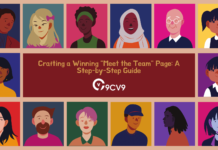

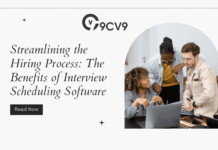











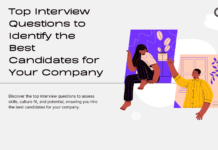
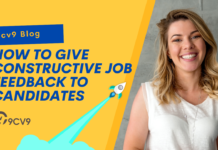


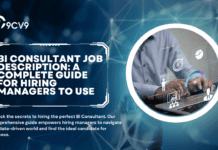


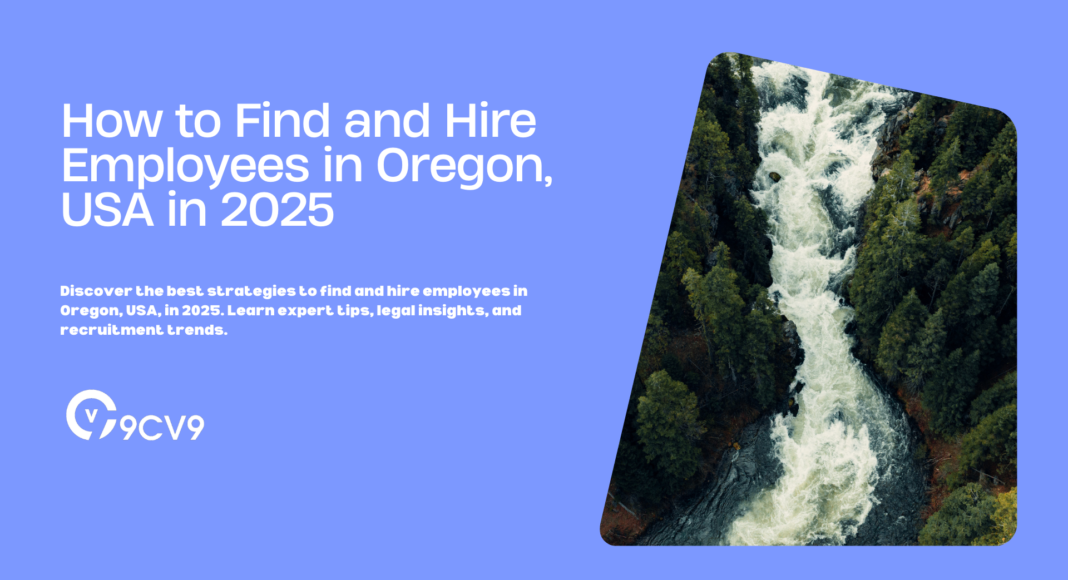


![Writing A Good CV [6 Tips To Improve Your CV] 6 Tips To Improve Your CV](https://blog.9cv9.com/wp-content/uploads/2020/06/2020-06-02-2-100x70.png)


